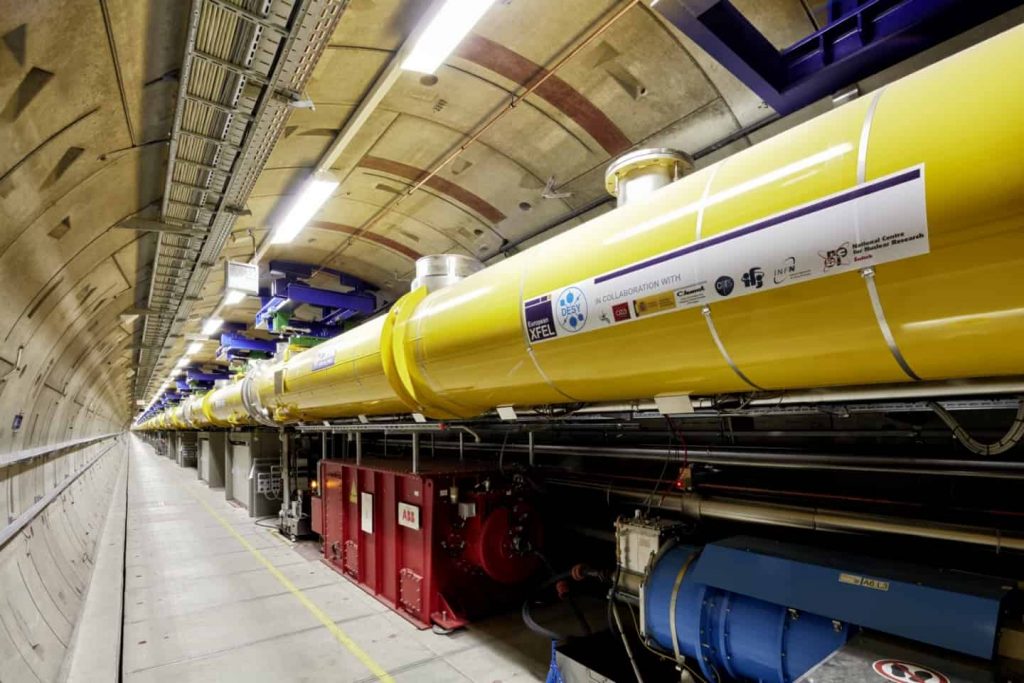The horizon of scientific discovery is about to be dramatically expanded as the US Department of Energy’s SLAC National Accelerator Laboratory nears completion of its monumental project – the Linac Coherent Light Source II (LCLS-II), set to unleash an unparalleled stream of ultra-bright X-rays.
In a groundbreaking announcement, SLAC revealed that their new superconducting accelerator has successfully propelled electrons through its intricate pathways, marking a pivotal milestone in the journey towards creating the world’s most potent X-ray free electron laser. This achievement comes after over a decade of collaboration between four national laboratories – Argonne, Berkeley Lab, Fermilab, and Jefferson Lab – along with contributions from Cornell University.
Leading scientist Dan Gonnella shared his elation at witnessing electrons traverse the Linac Coherent Light Source II, stating, “Seeing electrons make it all the way through the LCLS-II is proof that our idea to make the source for an extremely powerful superconducting X-ray machine at SLAC is going to work.” This accomplishment not only demonstrates their confidence in the project’s success but also underscores the sheer dedication and effort that went into this endeavor.
Once operational, LCLS-II is poised to revolutionize the scientific landscape. With X-rays 10,000 times brighter than its predecessor, it will enable researchers to delve into previously unimaginable depths of knowledge. The facility’s capacity to produce one million X-ray flashes per second – a significant leap from the current 120 flashes per second – is expected to drive advancements across various disciplines.
The applications stemming from this innovation are vast and promising. From harnessing solar energy to creating sustainable manufacturing methods and designing novel drugs, the possibilities are limitless. Notably, the new superconducting accelerator empowers scientists to tackle an incredible array of questions that have eluded exploration until now.
The journey to this achievement was arduous, as engineers and scientists meticulously ensured that the facility remained free of contaminants that could hamper performance. Niobium cavities, a crucial element of the accelerator’s design, were fabricated miles away, posing challenges during transportation and installation. Despite the obstacles, the team’s commitment and dedication prevailed.
As the project enters its final stages, the focus shifts towards refining the quality of the electron beam, a critical factor in optimizing X-ray production. The journey has been long and demanding, but the sight of the high-energy electron beam serves as a beacon of progress. “The powerful beam is a glimpse of light at the end of our project’s long tunnel,” remarked SLAC scientist Axel Brachman, encapsulating the profound significance of this achievement.
In the near future, as the Linac Coherent Light Source II commences operation, the scientific community eagerly anticipates the unprecedented insights and innovations it will bring, standing as a testament to human ingenuity and perseverance in the pursuit of knowledge.

